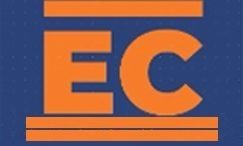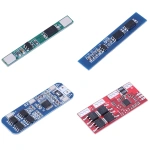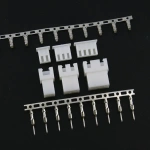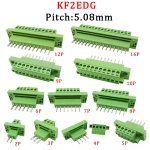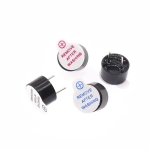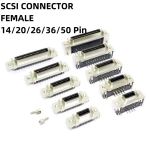CUSTOM MADE PCBs & CLONE PCBs

Below is a table comparing Clone PCBs and Custom New Made PCBs based on various aspects:
| Aspect | Clone PCBs | Custom New Made PCBs |
|---|---|---|
| Definition | Replication of an existing PCB design | Creation of a completely new PCB design |
| Purpose | Replacement, repair, or modification of existing devices | Tailored solution for specific applications or prototypes |
| Design Time | Reduced as the design is based on an existing blueprint | Time-consuming, involving designing from scratch |
| Intellectual Property | May raise ethical concerns regarding original designs | Clear ownership of the design, potential for patents |
| Component Availability | Limited by the components used in the original design | Freedom to choose components based on application requirements |
| Cost | Often cost-effective, especially for repairs | Can be higher due to design complexity and custom components |
| Innovation | Limited to the capabilities of the original design | Allows for innovation and optimization for specific needs |
| Lead Time | Shorter lead time as the design is already available | Longer lead time due to the design process |
| Regulatory Compliance | May inherit compliance from the original design | Must ensure compliance with regulations from the beginning |
| Flexibility | Limited in terms of major design changes | Highly flexible, allows for iterative design improvements |
| Risk of Obsolescence | Potential risk if the original design uses obsolete components | Can adapt to newer technologies and components |
| Quality Control | Quality depends on the accuracy of the cloning process | Quality can be closely monitored throughout the design process |
Please attach for RFQ.
Photos of your circuit board.
Description of the board’s application.
Reason for copying the board.
We may reject your inquiry if the background information of your project is insufficient.
Step by step

Custom made PCBs
Prepare BOM + schematics diagram + PCB LAYOUT
Certainly! Creating custom-made Printed Circuit Boards (PCBs) involves a systematic process, including understanding the board’s application, preparing a Bill of Materials (BOM), creating schematics diagrams, and designing the PCB layout. Let’s break down the details into points:
Understanding the Board’s Application:
- Define the Purpose:
- Clearly outline the intended purpose of the PCB. Understand the function it needs to perform, whether it’s for a specific electronic device, a prototype, or a custom application.
- Input and Output Requirements:
- Identify the input signals and output results expected from the PCB. Consider voltage levels, signal types, and any specific interfaces required for connectivity.
- Environmental Considerations:
- Determine the environmental conditions the PCB will operate in. Factors such as temperature, humidity, and exposure to external elements may impact the design and material selection.
- Regulatory Compliance:
- Research and understand any regulatory standards or certifications the PCB must meet. This includes safety standards, electromagnetic compatibility (EMC), and other relevant regulations.
Preparing Bill of Materials (BOM):
- Component Selection:
- Choose electronic components based on the board’s requirements. Consider factors such as functionality, performance, and availability. Ensure compatibility with the chosen application.
- Vendor Selection:
- Identify reliable component vendors. Consider factors such as cost, lead time, and reputation. Verify that selected components are readily available and meet quality standards.
- Quantities and Alternatives:
- Specify the quantity of each component needed for production. Include alternatives for critical components to avoid delays in case of supply chain issues.
Schematics Diagram:
- Block Diagram:
- Create a high-level block diagram illustrating the major functional blocks of the PCB. This helps in visualizing the overall structure and flow of signals.
- Detailed Schematics:
- Develop detailed schematics for each functional block. Clearly define connections, component values, and reference designators. Use standardized symbols for components.
- Annotations and Notes:
- Include annotations and notes on the schematics to provide additional information, such as component footprints, specific requirements, or design considerations.
PCB Layout:
- Component Placement:
- Arrange components on the PCB to optimize signal flow and minimize interference. Consider heat dissipation, accessibility for testing, and the overall size constraints.
- Routing:
- Plan and execute the routing of traces carefully. Ensure proper impedance matching for high-speed signals and avoid crossing sensitive lines. Use ground and power planes effectively.
- Layer Stackup:
- Decide on the layer stackup based on the complexity of the design. Consider signal integrity, power distribution, and electromagnetic interference (EMI) mitigation.
- Design Rules:
- Set design rules for trace widths, clearances, and other parameters based on the capabilities of the PCB fabrication process. Adhere to industry standards and guidelines.
- 3D Visualization:
- Utilize 3D visualization tools to inspect the physical layout and identify any potential issues with component clearances or mechanical constraints.
Remember, collaboration and iterative design are key components of the custom PCB creation process. Regularly review and refine the design based on testing and feedback to ensure a successful implementation of the custom-made PCB.

Clone PCBs
Exploring the Fascinating World of Clone PCBs: A Deep Dive
In the fast-paced realm of electronics and technology, Printed Circuit Boards (PCBs) play a crucial role in powering the devices we use daily. One intriguing aspect of PCBs is the concept of clone PCBs, which involves replicating existing circuit boards for various purposes. In this post, we will delve into the world of clone PCBs, exploring their uses, benefits, and the ethical considerations surrounding their creation.
Understanding Clone PCBs:
A clone PCB is essentially a replica of an existing circuit board. This process involves reverse engineering, where the original PCB’s design and layout are analyzed to recreate an identical or functionally similar board. Clone PCBs can be created for a variety of reasons, including:
- Obsolete Component Replacement:
- Some electronic devices become outdated, and the components they use may become obsolete. Clone PCBs allow for the replacement of obsolete components, extending the lifespan of devices.
- Repair and Maintenance:
- When a device malfunctions, obtaining replacement parts from the original manufacturer may be challenging. Clone PCBs enable technicians and hobbyists to repair electronic devices by reproducing the necessary circuitry.
- Customization:
- Clone PCBs can be used to modify existing devices or create custom versions by altering the original design. This is particularly useful for enthusiasts who want to add new features or optimize the performance of their electronics.
Benefits of Clone PCBs:
- Cost-Effectiveness:
- Clone PCBs can be a cost-effective solution for repairing or maintaining electronic devices. Instead of scrapping an entire device due to a faulty PCB, a clone PCB allows for a targeted and more affordable repair.
- Access to Obsolete Technology:
- Clone PCBs provide a way to revive devices that rely on outdated technology. This is crucial in industries where certain equipment is still functional but difficult to replace due to technological advancements.
- Rapid Prototyping:
- For engineers and designers, clone PCBs can serve as prototypes for testing and refining new ideas. Creating a clone of an existing PCB allows for quick experimentation without starting from scratch.
Ethical Considerations:
While clone PCBs offer several advantages, there are ethical considerations to keep in mind:
- Intellectual Property:
- Creating clone PCBs raises questions about intellectual property rights. Replicating a PCB without proper authorization from the original designer or manufacturer may infringe on intellectual property laws.
- Fair Competition:
- Cloning PCBs for commercial purposes without permission can undermine fair competition in the market. It is essential to respect the intellectual property of others and adhere to ethical business practices.
Conclusion:
Clone PCBs open up possibilities for extending the life of electronic devices, facilitating repairs, and fostering innovation. However, it is crucial to navigate the ethical landscape carefully to ensure that the benefits of clone PCBs are realized without compromising intellectual property rights or fair competition in the industry. As technology continues to evolve, the responsible use of clone PCBs will be integral to a sustainable and innovative electronics ecosystem.

Clone PCBs
Know more about Clone PCBs
Component Evaluation and Connection Trace:
Evaluate all components on the PCB.
Passive components (resistors, capacitors, inductors) are usually simple to source.
Active components (transistors, diodes, IC chips) may be harder to source, especially if in a small package.
Consider IC unlock (decryption) for microcontrollers, noting that code protection features may pose challenges.
Documentation of Schematic and Connection Trace (PCB Reverse Engineering):
Document the schematic of the connection trace.
Tracing may be challenging when vias are hidden under components.
Use a multimeter to check connectivity.
Multilayer boards with buried vias may require X-Ray for tracing.
Obtain gerber files and BOM list through reverse engineering.
Drafting a New PCB Layout:
Copying PCBs is not a cheap solution, especially for complex boards.
Microcontroller-containing boards are considered complex.
Develop a new PCB layout based on reverse-engineered data.
Prototype PCB Fabrication:
Fabricate a prototype PCB based on the new layout.
Consider the complexity of the board, especially if it contains a microcontroller IC chip.
PCB Functional Testing:
Perform functional testing to address concerns:
Is it the same as the original?
Will it be reliable?
Ensure the cloning is identical to the original version.
Inspect performance, troubleshoot issues, and fix incompatibilities before mass production.

